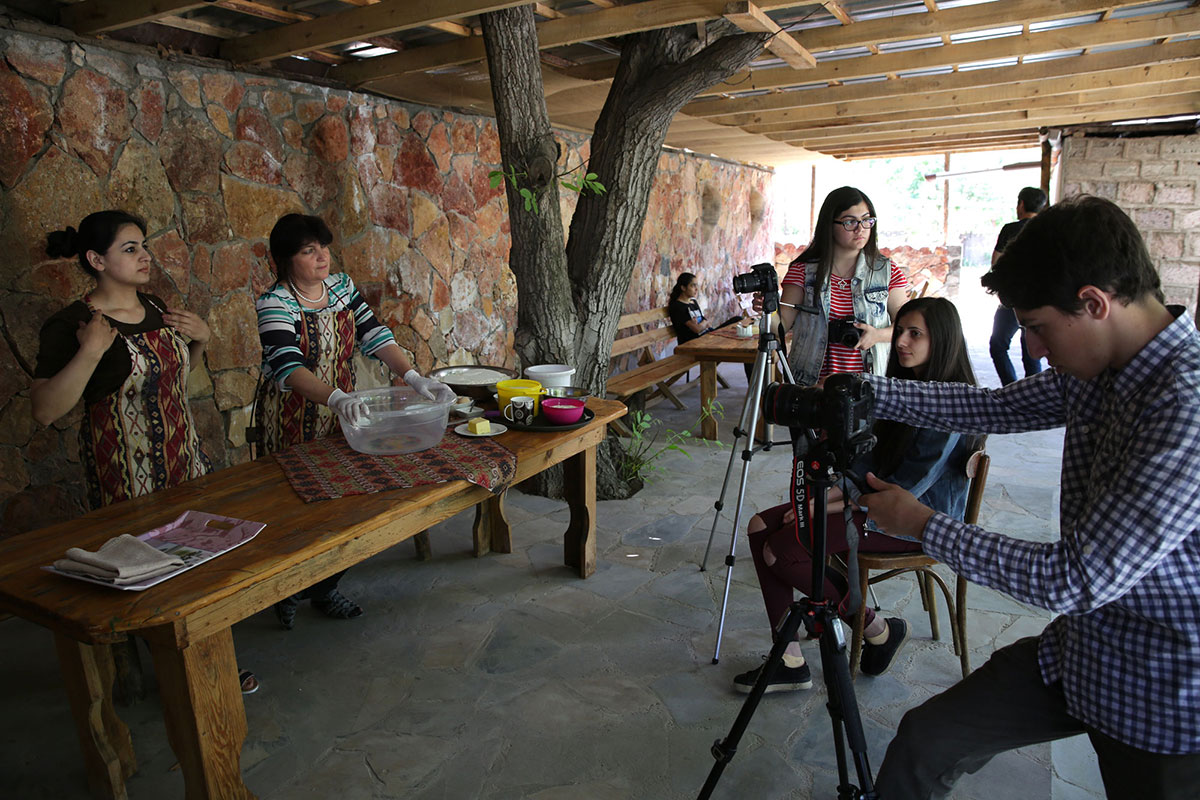Over the past year, the Center for Folklife and Cultural Heritage’s Language Vitality Initiative updated, translated, and redesigned a Video Production Handbook. The free, downloadable guide, available in English, Chinese, and Tibetan, furthers the initiative’s work to provide training materials to language communities and increase knowledge of audio and video documentation best practices.
Originally developed by Kristin Dowell, the handbook was created as a teaching tool for the Oklahoma Native American Youth Video Workshops, a program of the Oklahoma Language Digitization and Access Project. The first release was supported by a 2007 NSF-NEH Documenting Endangered Language grant awarded to Mary S. Linn, curator of language and cultural vitality, when she worked at the Sam Noble Museum. The 2007 version of the handbook was regularly used in classrooms by instructors Kristin Dowell, Racquel-María Sapién, Michael McCarty, Mary Linn, Olivia Sammons, and Brooke Shackleford, who all improved the manual through use.
The handbook was later translated into Chinese and Tibetan for use in the Sino-Tibetan Language Research Methodology Workshop, a Center-supported language documentation training at Nankai University in China.
“There is tremendous power in creating stories, supporting language work, recording oral histories, and documenting cultural heritage through media production,” said Kristin Dowell, director of museum and cultural heritage studies at Florida State University. “Teaching video production skills to as many people as possible has been a fierce commitment of mine for many years.”

The use of the handbooks within these workshop contexts exemplifies one of many methods the initiative engages to train new generations of community language practitioners and linguists. The updated handbooks will be incorporated into the curricula for online workshops for speakers of Eastern Himalayan languages of Sichuan.
“I hope this beginner-level handbook will be helpful for anyone interested in getting better results from their cameras when they are documenting their family histories, languages, or creating their own stories,” Linn said.
Under the guidance of Linn, a core team of staff at the Language Vitality Initiative and the Center came together to update and redesign the handbook. Language Vitality partner Nate Sims edited the translations; intern Brooke McKelvey updated the text to reflect the best audio and video documentation practices; media specialist Charlie Weber reviewed video production content and selected images; communications assistant Cecelia Halle designed the layout; and Jim Deutsch and Elisa Hough copyedited the English version. This work would not have been possible without the generous support of Ferring Pharmaceuticals.
The Language Vitality Initiative aims to increase access to language documentation materials and intends to share the handbook with those interested in creating further translations. For questions, credit information, and layout support for creating translations of the handbook, please contact the Language Vitality team at folklife@si.edu.
About the Language Vitality Initiative
With Indigenous and minoritized languages under threat, the Smithsonian Center for Folklife and Cultural Heritage’s Language Vitality Initiative supports community-driven language reclamation efforts. Our research promotes language use in new and traditional contexts and strengthens engagement in cultural heritage wellness. We work with digital and emerging media to promote unique voices and worldviews. We seek to educate new generations of community language practitioners and linguists through informal and formal workshops and institutes. All our work is used to educate majority-language users about the benefits of living in a multilingual world.


